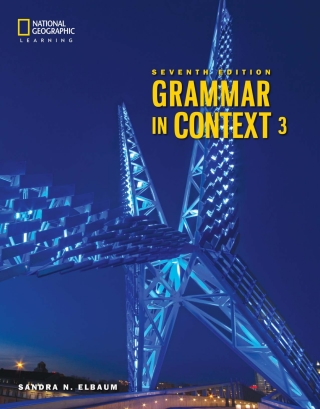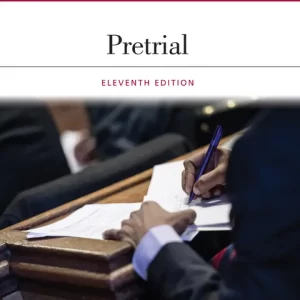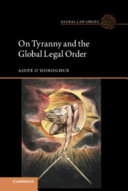Buy Grammar In Context 3, 7th Edition PDF ebook by author Sandra N. Elbaum – published by Cengage ELT in 2021 and save up to 80% compared to the print version of this textbook. With PDF version of this textbook, not only save you money, you can also highlight, add text, underline add post-it notes, bookmarks to pages, instantly search for the major terms or chapter titles, etc.
You can search our site for other versions of the Grammar In Context 3, 7th Edition PDF ebook. You can also search for others PDF ebooks from publisher Cengage ELT, as well as from your favorite authors. We have thousands of online textbooks and course materials (mostly in PDF) that you can download immediately after purchase.
Note: e-textBooks do not come with access codes, CDs/DVDs, workbooks, and other supplemental items.
eBook Details:
Full title: Grammar In Context 3, 7th Edition
Edition: 7th
Copyright year: 2021
Publisher: Cengage ELT
Author: Sandra N. Elbaum
ISBN: 9780357737866, 9780357737866
Format: PDF
Description of Grammar In Context 3, 7th Edition:
The original contextualized approach brings grammar to life. Grammar in Context brings grammar alive through engaging and informative readings that are relevant to learners’ lives. National Geographic photography and stories deliver real-world content to improve grammar awareness and retention. Students learn more, remember more, and use language more effectively when they learn grammar in context.Important Notice: Media content referenced within the product description or the product text may not be available in the ebook version.
Table of Contents of Grammar In Context 3, 7th Edition PDF ebook:
TitleCopyrightContentsA Word from the AuthorWelcome to Grammar in Context, Seventh EditionCreditsAcknowledgmentsUnit 1: Verb Tense Review1.1 The Present of Be1.2 The Simple Present1.3 The Present Continuous1.4 The Present Continuous vs. The Simple Present – Action and Nonaction Verbs1.5 The Future – Form1.6 Will, Be Going To, or Present Continuous for Future1.7 The Simple PastSummary of Unit 1ReviewFrom Grammar to WritingUnit 2: The Present Perfect and the Present Perfect Continuous2.1 The Present Perfect – Form2.2 The Past Participle2.3 Placement of Adverbs2.4 The Present Perfect – Overview of Uses2.5 The Present Perfect with Indefinite Past Time – Overview2.6 The Present Perfect with Ever and Never2.7 The Present Perfect with Yet and Already2.8 The Present Perfect with Lately, Recently, and Just2.9 The Present Perfect with No Time Mentioned2.10 The Present Perfect with Repetition from Past to Present2.11 The Present Perfect with Continuation from Past to Present2.12 The Present Perfect Continuous2.13 The Present Perfect, the Present Perfect Continuous, and the Simple PastSummary of Unit 2ReviewFrom Grammar to WritingUnit 3: Passive and Active Voice3.1 Active and Passive Voice – Introduction3.2 Comparison of Active and Passive Voice3.3 Active and Passive Voice – Use3.4 Verbs with Two Objects3.5 Transitive and Intransitive Verbs3.6 The Passive Voice with Get3.7 Participles Used as Adjectives3.8 Other Past Participles Used as Adjectives3.9 Get vs. Be with Past Participles and Other AdjectivesSummary of Unit 3ReviewFrom Grammar to WritingUnit 4: The Past Continuous The Past Perfect The Past Perfect Continuous4.1 The Past Continuous – Form4.2 The Past Continuous – Use4.3 The Past Continuous vs. the Simple Past4.4 The Past Perfect – Form4.5 The Past Perfect – Use (Part 1)4.6 When with the Simple Past or the Past Perfect4.7 The Past Perfect – Use (Part 2)4.8 The Past Perfect Continuous – Form4.9 The Past Perfect Continuous – Use4.10 The Past Perfect (Continuous) vs. the Present Perfect (Continuous)4.11 Comparison of TensesSummary of Unit 4ReviewFrom Grammar to WritingUnit 5: Modals and Related Expressions5.1 Modals – An Overview5.2 Possibility: May, Might, Could5.3 Necessity / Obligation: Must, Have to, Have Got to5.4 Expectation: Be Supposed To5.5 Advice: Should, Ought to, Had Better5.6 Suggestion: Can / Could5.7 Negative Modals5.8 Ability / Possibility: Can, Be Able To5.9 Logical Conclusion: Must5.10 Probability vs. Possibility: Must vs. May, Might, Could5.11 Continuous ModalsSummary of Unit 5ReviewFrom Grammar to WritingUnit 6: Modals in the Past6.1 Modals in the Past – Form6.2 Past Regrets or Mistakes – Should Have6.3 Past Possibility – May / Might / Could + Have6.4 Logical Conclusion about the Past – Must Have6.5 Past Direction Not Taken – Could Have6.6 Must Have + Past Participle vs. Had to + Base Form6.7 Ability and Possibility in the Past6.8 Modals in the Past: Continuous FormsSummary of Unit 6ReviewFrom Grammar to WritingUnit 7: Adjective Clauses Descriptive Phrases7.1 Adjective Clauses – Introduction7.2 Relative Pronoun as Subject7.3 Relative Pronoun as Object7.4 Relative Pronoun as Object of Preposition7.5 Place and Time in Adjective Clauses7.6 Whose in Adjective Clauses7.7 Adjective Clauses after Indefinite Pronouns7.8 Nonessential Adjective Clauses7.9 Essential vs. Nonessential Adjective Clauses7.10 Descriptive PhrasesSummary of Unit 7ReviewFrom Grammar to WritingUnit 8: Infinitives and Gerunds8.1 Infinitives – Overview8.2 Verbs Followed by an Infinitive8.3 Verb + Object + Infinitive8.4 Causative Verbs8.5 Adjective + Infinitive8.6 Infinitives as Subjects8.7 Infinitives to Show Purpose8.8 Infinitives with Too and Enough8.9 Gerunds – Overview8.10 Gerunds as Subjects8.11 Gerunds after Prepositions and Nouns8.12 Prepositions after Verbs, Nouns, and Adjectives8.13 Verbs Followed by Gerunds8.14 Verbs Followed by a Gerund or Infinitive8.15 Gerund or Infinitive as Subject8.16 Gerund or Infinitive after a Verb: Differences in Meaning8.17 Used To / Be Used To / Get Used To8.18 Sense-Perception VerbsSummary of Unit 8ReviewFrom Grammar to WritingUnit 9: Adverbial Clauses and Phrases Sentence Connectors So . . . That/Such . . . That9.1 Adverbial Clauses and Phrases – Introduction9.2 Reason and Purpose9.3 Time Clauses and Phrases9.4 Using the -ing Form after Time Words9.5 Contrast9.6 Condition9.7 Sentence Connectors9.8 So . . . That / Such . . . ThatSummary of Unit 9ReviewFrom Grammar to WritingUnit 10: Noun Clauses10.1 Noun Clauses10.2 Noun Clauses as Included Questions10.3 Question Words Followed by an Infinitive10.4 Exact Quotes10.5 Exact Quotes vs. Reported Speech10.6 Reported Speech and the Sequence of Tenses10.7 Say vs. Tell10.8 Exceptions to the Rule of Sequence of Tenses10.9 Reporting an Imperative10.10 Using Reported Speech to Paraphrase10.11 Noun Clauses after Past-Tense Verbs10.12 Noun Clauses as Reported QuestionsSummary of Unit 10ReviewFrom Grammar to WritingUnit 11: Unreal Conditionals Wishes11.1 Unreal Conditionals – Present11.2 Implied Conditionals11.3 Real Conditionals vs. Unreal Conditionals11.4 Unreal Conditionals – Past11.5 WishesSummary of Unit 11ReviewFrom Grammar to WritingAppendix A: Summary of Verb TensesAppendix B: Nonaction VerbsAppendix C: Irregular Verb FormsAppendix D: Gerunds and InfinitivesAppendix E: Verbs and Adjectives Followed by a PrepositionAppendix F: Noncount and Count NounsAppendix G: ArticlesAppendix H: Capitalization and Punctuation RulesAppendix I: Sentences TypesAppendix J: ConnectorsGlossaryIndexNotes





